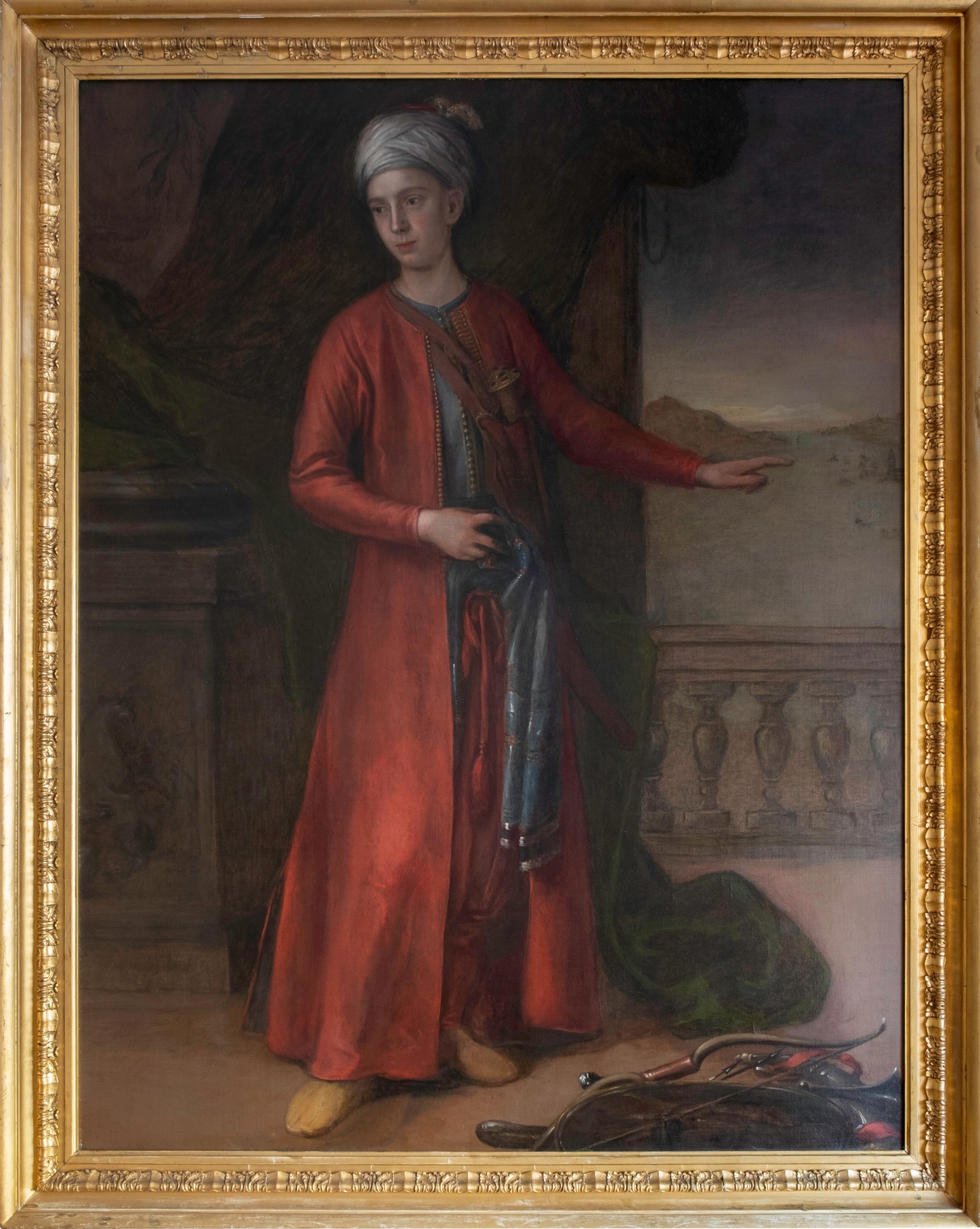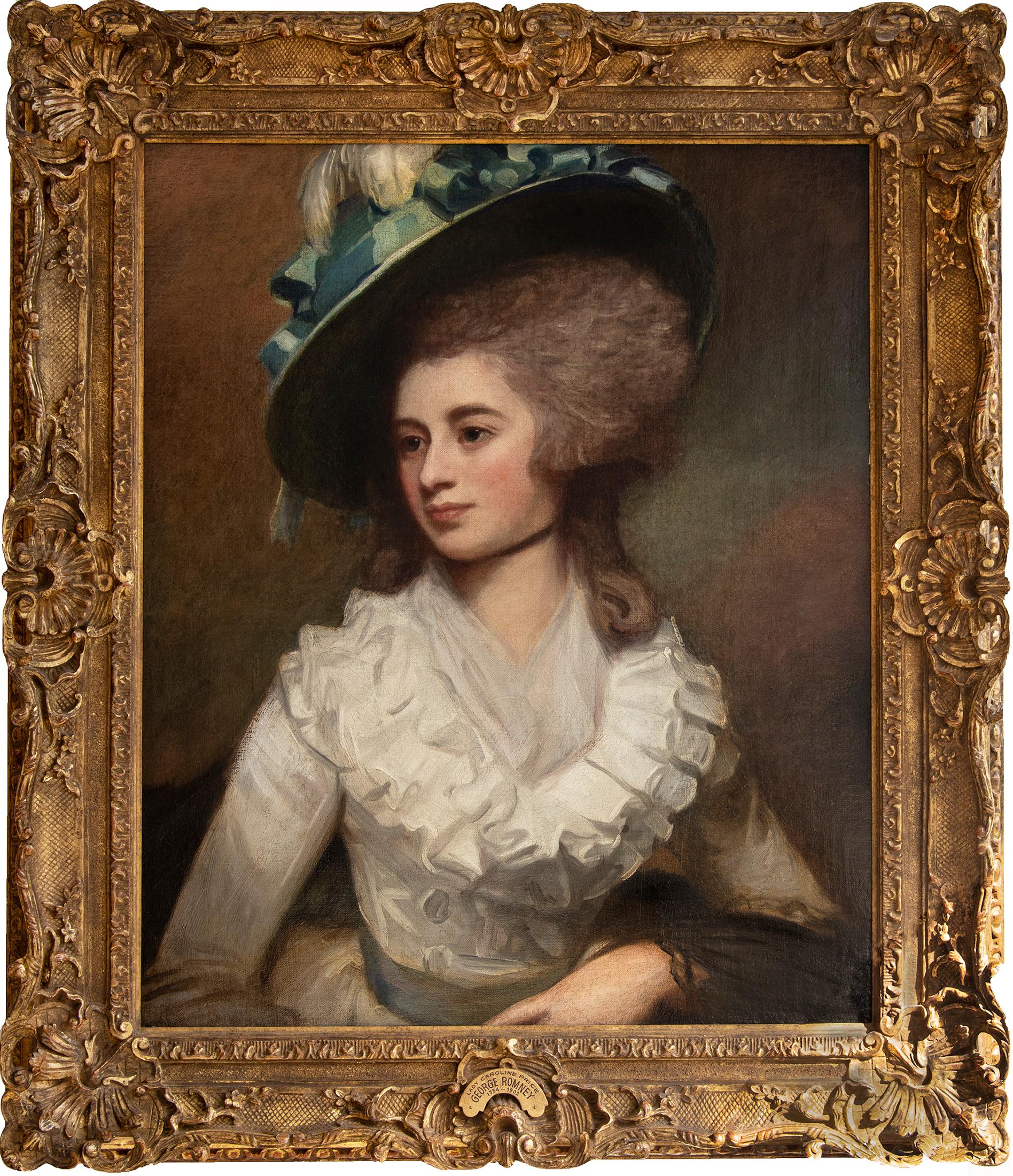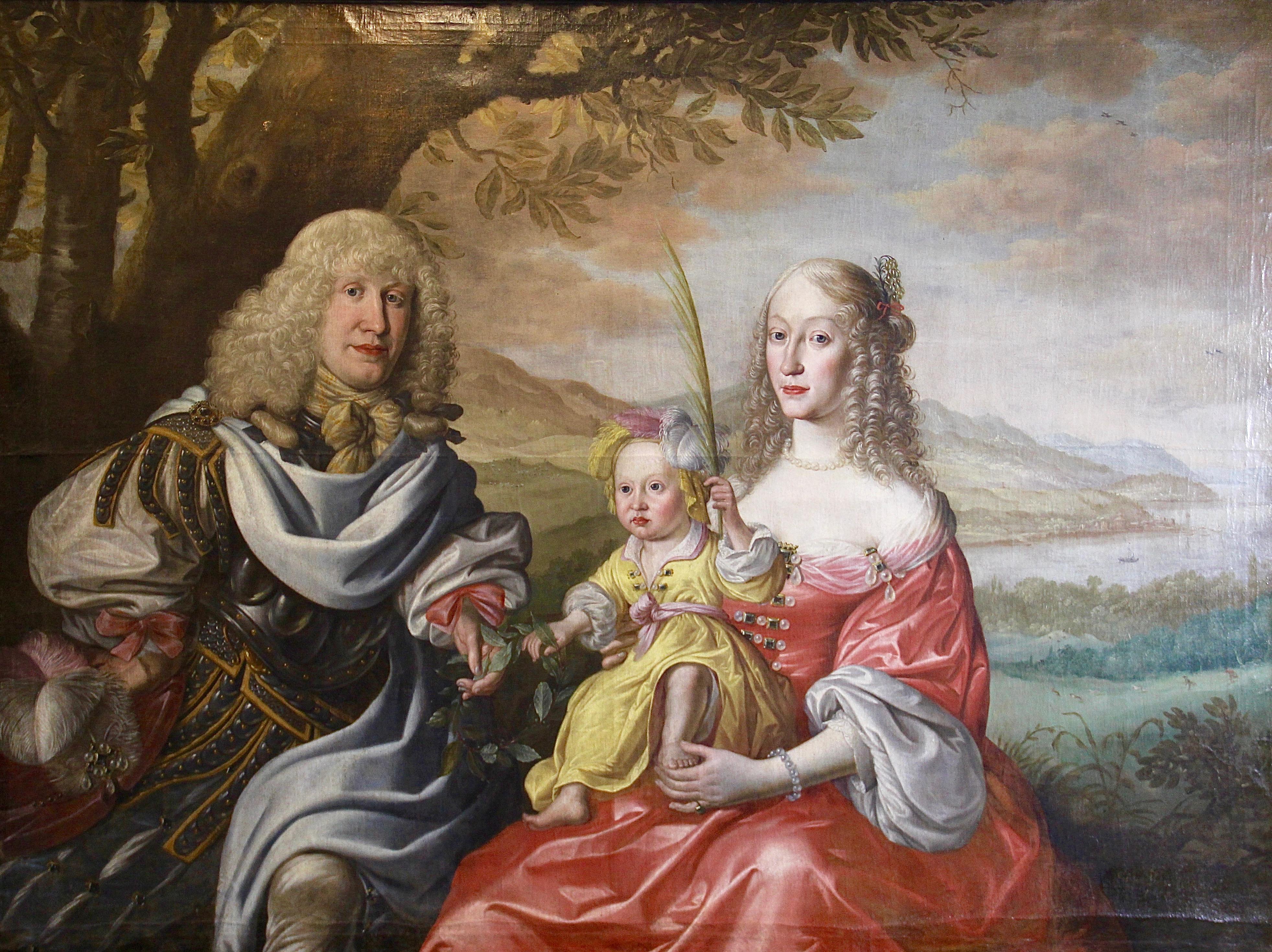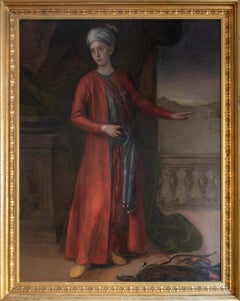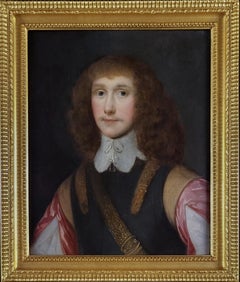Portrait Lady Voet Paint Oil on canvas Old master Flemis Freench 17/18th Century
View Similar Items
Want more images or videos?
Request additional images or videos from the seller
1 of 20
Portrait Lady Voet Paint Oil on canvas Old master Flemis Freench 17/18th Century1660-1720
1660-1720
About the Item
- Creation Year:1660-1720
- Dimensions:Height: 31.11 in (79 cm)Width: 27.17 in (69 cm)
- Medium:
- Movement & Style:
- Circle Of:Jacob Ferdinand Voet (Antwerp 1639 - Paris 1689) (1639 - 1689, French)
- Period:
- Condition:
- Gallery Location:Riva del Garda, IT
- Reference Number:1stDibs: LU98819092992
About the Seller
4.8
Platinum Seller
These expertly vetted sellers are 1stDibs' most experienced sellers and are rated highest by our customers.
Established in 2017
1stDibs seller since 2018
203 sales on 1stDibs
More From This SellerView All
- Deposition Atala De Roussy-trioson Paint Oil on canvas 19/20th Century FrenchLocated in Riva del Garda, ITThe deposition of Atala Follower of Anne-Louis Girodet de Roussy-Trioson (Montargis, 1767 - Paris, 1824) 19th-20th century Oil on canvas 47 x 65 cm. - Framed 67 x 84 cm The propos...Category
Late 19th Century Old Masters Paintings
MaterialsOil
$1,947 Sale Price20% Off - Perroneau Portrait Lady Woman Paint Oil on canvas 18th Century Old master FrenchLocated in Riva del Garda, ITJean-Baptiste Perroneau (Paris, 1715 – Amsterdam, 1783) Portrait of a lady Oil on oval canvas 60 x 50 cm. - In frame 77 x 66 cm. Work accompanied by expertise: Raffaelle Colace (Cremona), Ferdinando Arisi Reference bibliography: d’Arnoult, Dominique (2014) Jean-Baptiste Perronneau, c 1715-1783, un portraitiste dans l’Europe des Lumières Excerpt from the expertise of Dr. Colace: This refined portrait of a lady is a perfect example of the style of Jean-Baptiste Perroneau, a very talented French painter, whose most beautiful works are located, just like this one, between the fifth and sixth decades of the eighteenth century. "Perroneaeu is more naturally colored than La Tour, the est, in the peinture de poussière colorée, tout plein de tons clairs, frais, presque humides": this is how his brothers wrote about him in La Maison d...Category
18th Century Old Masters Paintings
MaterialsOil
$10,932 Sale Price20% Off - Terwesten Woman Allegory Art Paint Oil on canvas 17/18th Century Old masterLocated in Riva del Garda, ITMattheus Terwesten (The Hague, 1670 - 1757) Portrait of a young woman with palette and brushes, as Allegory of the art of Painting Oil on canvas 160 x 91 cm. - In frame 178 x 107 cm...Category
17th Century Old Masters Paintings
MaterialsOil
$10,937 Sale Price20% Off - Portrait Knight Paint Oil on canvas 17th Century Lombard school Old master ItalyLocated in Riva del Garda, ITLombard painter of the 17th century Portrait of a Knight in Armour Oil on canvas 81 x 70 cm./ Framed 93 x 82 A handsome gentleman in armour, immortalised in an authoritative and pr...Category
17th Century Old Masters Paintings
MaterialsOil
$5,638 Sale Price20% Off - Portrait Noblewoman Dog Van Loo Paint 18th Century Oil on canvas Old master ArtLocated in Riva del Garda, ITLouis Michel van Loo (Toulon 1707- Paris 1771) attributable Portrait of a noblewoman with her little dog Oil on canvas (79 x 66 cm. - with frame 92 x 78 cm.) A qualitative portrait depicting an elegant noblewoman of French origin, presumably belonging to the wealthy court of Versailles during the reign of Louis XV; this work fully reflects the pictorial qualities as well as the refinement of the compositional style of the French painter Louis Michel van Loo (1707- 1771), one of the most significant portrait painters of his time, and for this reason in demand at the most noble European courts. The work, taking up the traditional formula for portraits of members of the aristocracy, shows the effigy in a half-length pose, slightly turned to the right and looking directly at the viewer. The woman, with a regal bearing, is here portrayed intent on completing her daily beauty ritual, wearing a cape during her make-up, which must have just been completed as pink powder is visible on her cheeks. This luxurious garment reveals a corset with a daring neckline, made of silk and lace, and a coral-coloured dress ending in wide jabote cuffs. Her hair is styled in the French fashion in a hairstyle that highlights her facial features. Having finished her beauty ritual, the woman is intent on removing her cape with one hand, an elegant gesture that emphasises her noble pose. At her side is her small pet dog, sitting on a blue velvet cushion with gold trim. The canvas may have been made on the occasion of a wedding, elegantly celebrating the role of a member of the aristocracy. The presence of the pet depicted in her arms had in fact a precise meaning: the fidelity that is such a well-known characteristic of the dog, declared at the same time the virtues of the effigy. Louis Michel van Loo (Toulon 1707- Paris 1771) was the son of the painter Jean Baptiste van Loo, with whom he studied in Rome and Turin. He attended the Paris Academy, where he won the first prize for painting in 1726. In 1728 he returned to Rome, where he met Francois Boucher. In 1732, passing through Turin, he returned to Paris. In 1737 van Loo became court painter in Madrid, succeeding Jean Ranc...Category
18th Century Old Masters Paintings
MaterialsOil
$9,091 Sale Price20% Off - Resurrection Christ Tiziano 16/17th Century paint Oil on canvas Old master ItalyBy Tiziano Vecellio (Pieve di Cadore 1490 - Venice 1576)Located in Riva del Garda, ITThe Resurrection of Christ Follower of Tiziano Vecellio (Pieve di Cadore 1490 - Venice 1576) Venetian school of the late 16th/early 17th century Oil on canvas 108 x 78 cm. - Frame...Category
17th Century Old Masters Paintings
MaterialsOil
$7,480 Sale Price20% Off
You May Also LikeView All
- 18th C. Portrait of the 4th Earl of Sandwich a View of Constantinople BeyondLocated in London, GBJohn Montagu, 4th Earl of Sandwich (13 November 1718 – 30 April 1792) Attributed to George Knapton (1698-1778) Dressed in the Turkish manner, stand...Category
18th Century Old Masters Figurative Paintings
MaterialsOil
- Portrait of Gentleman, Thomas Bruce, Earl of Elgin c.1638 Manor House ProvenanceLocated in London, GBTitan Fine Art present this picture which formed part of a historic collection of an English aristocratic family, Lord and Lady Sandys at their magnificent baroque and Regency Grade-...Category
17th Century Old Masters Portrait Paintings
MaterialsOil, Wood Panel
- Portrait of a Lady Diana Cecil, Countess of Elgin c.1638, Manor House ProvenanceLocated in London, GBTitan Fine Art present this picture which formed part of a historic collection of an English aristocratic family, Lord and Lady Sandys at their magnificent baroque and Regency Grade-...Category
17th Century Old Masters Portrait Paintings
MaterialsOil, Wood Panel
- 18th Century Oil Painting Portrait of Provost John Pitcairn of DundeeBy Sir Henry RaeburnLocated in London, GBThe pendant to the present portrait showing John Pitcairn's wife Jean, née Robertson, is in the Huntington Art Gallery, San Marino. Both works are datable to the 1790s. Pitcairn, who served as Provost of Dundee from 1782-84, a position his father-in-law also held from 1731-32, later sat to Raeburn for another portrait, dated to circa 1820, which is now in the Royal Scottish Academy, Edinburgh Sale of Christie's London: Wednesday, July 9, 2014 [Lot 00212] Old Master & British Paintings Day Sale Sold For 22,500 GBP Premium Provenance By descent from the sitter to his great-grandson, Ronald Andrew Pitcairn of Pitcullo; Christie's, London, 25 June 1904, lot 58 (200 gns. to Wallis). Alexander Reid, Glasgow. With Agnew's, London, where acquired by A.R. Wilson Wood, 7 April 1909; Christie's, London, 26 June 1914, lot 78 (850 gns. to Agnew). Anonymous sale; Christie's, London, 24 November 1972, lot 27 (320 gns.) Private collection, Dublin, Ireland Exhibition Edinburgh, Royal Scottish Academy, 1876, no. 256 Literature W. Armstrong, Sir Henry Raeburn, London, 1901, p. 110. J. Greig, Sir Henry Raeburn, R.A., His life and work with a catalogue of his pictures, London, 1911, p. 55. R. Asleson and S.M. Bennett, British Paintings at The Huntington, New Haven and London, 2001, p. 312, fig. 12 Sir Henry Raeburn FRSE RA RSA (4 March 1756 – 8 July 1823) was a Scottish portrait painter and Scotland's first significant portrait painter since the Union to remain based in Scotland. He served as Portrait Painter to King George IV in Scotland. Raeburn was born the son of a manufacturer in Stockbridge, on the Water of Leith: a former village now within the city of Edinburgh. He had an older brother, born in 1744, called William Raeburn. His ancestors were believed to have been soldiers, and may have taken the name "Raeburn" from a hill farm in Annandale, held by Sir Walter Scott's family. Orphaned, he was supported by William and placed in Heriot's Hospital, where he received an education. At the age of fifteen he was apprenticed to the goldsmith James Gilliland of Edinburgh, and various pieces of jewellery, mourning rings and the like, adorned with minute drawings on ivory by his hand, still exist. Soon he took to the production of carefully finished portrait miniatures; meeting with success and patronage, he extended his practice to oil painting, at which he was self-taught. Gilliland watched the progress of his pupil with interest, and introduced him to David Martin, who had been the favourite assistant of Allan Ramsay the Latter, and was now the leading portrait painter in Edinburgh. Raeburn was especially aided by the loan of portraits to copy. Soon he had gained sufficient skill to make him decide to devote himself exclusively to painting. George Chalmers (1776; Dunfermline Town Hall) is his earliest known portrait. In his early twenties, Raeburn was asked to paint the portrait of a young lady he had noticed when he was sketching from nature in the fields. Ann was the daughter of Peter Edgar of Bridgelands, and widow of Count James Leslie of Deanhaugh. Fascinated by the handsome and intellectual young artist, she became his wife within a month, bringing him an ample fortune. The acquisition of wealth did not affect his enthusiasm or his industry, but spurred him on to acquire a thorough knowledge of his craft. It was usual for artists to visit Italy, and Raeburn set off with his wife. In London he was kindly received by Sir Joshua Reynolds, the president of the Royal Academy, who advised him on what to study in Rome, especially recommending the works of Michelangelo, and gave Raeburn letters of introduction for Italy. In Rome he met his fellow Scot Gavin Hamilton, Pompeo Girolamo Batoni and Byers, an antique dealer whose advice proved particularly useful, especially the recommendation that "he should never copy an object from memory, but, from the principal figure to the minutest accessory, have it placed before him." After two years of study in Italy he returned to Edinburgh in 1787, and began a successful career as a portrait painter. In that year he executed a seated portrait of the second Lord President Dundas. Examples of his earlier portraiture include a bust of Mrs Johnstone of Baldovie and a three-quarter-length of Dr James Hutton...Category
18th Century Old Masters Figurative Paintings
MaterialsOil
- 18th century portrait of the painter Nathaniel DanceLocated in London, GBCollections: Robert Gallon (1845-1925); Private Collection, UK. Oil on canvas laid down on panel Framed dimensions: 11.5 x 10 inches This highly engaging, previously unpublished portrait by Johan...Category
18th Century Old Masters Portrait Paintings
MaterialsOil, Wood Panel, Canvas
- Head of an AngelLocated in New York, NYProcaccini was born in Bologna, but his family moved to Milan when the artist was eleven years old. His artistic education was evidently familial— from his father Ercole and his elder brothers Camillo and Carlo Antonio, all painters—but his career began as a sculptor, and at an early age: his first known commission, a sculpted saint for the Duomo of Milan, came when he was only seventeen years old. Procaccini’s earliest documented painting, the Pietà for the Church of Santa Maria presso San Celso in Milan, was completed by 1604. By this time the artist had made the trip to Parma recorded by his biographers, where he studied Correggio, Mazzola Bedoli, and especially Parmigianino; reflections of their work are apparent throughout Procaccini's career. As Dr. Hugh Brigstocke has recently indicated, the present oil sketch is preparatory for the figure of the angel seen between the heads of the Virgin and St. Charles Borrommeo in Procaccini's altarpiece in the Church of Santa Afra in Brescia (ill. in Il Seicento Lombardo; Catalogo dei dipinti e delle sculture, exh. cat. Milan 1973, no. 98, pl. 113). As such it is the only known oil sketch of Procaccini's that can be directly connected with an extant altarpiece. The finished canvas, The Virgin and Child with Saints Charles Borrommeo and Latino with Angels, remains in the church for which it was painted; it is one of the most significant works of Procaccini's maturity and is generally dated after the artist's trip to Genoa in 1618. The Head of an Angel is an immediate study, no doubt taken from life, but one stylistically suffused with strong echoes of Correggio and Leonardo. Luigi Lanzi, writing of the completed altarpiece in 1796, specifically commented on Procaccini's indebtedness to Correggio (as well as the expressions of the angels) here: “Di Giulio Cesare...Category
17th Century Old Masters Figurative Paintings
MaterialsPaper, Canvas, Oil
Recently Viewed
View AllMore Ways To Browse
Jacob Lawence
Jacob Laws
Female Effigy
Swedish Lady Painting
17th Century Female Portraits
Flavio Painting
Cabinet Swedish Painting
Cardinal Necklace
Swedish Portrait 17th Century
18th Century Portrait Of Lady By A Sweden
Jacob Ferdinand Voet
Saling Ships
20th Century French Impressionist Painting
Blue Mountain
Together In Paris
Light Blue Oil Painting
Black And White Figurative Paintings
Lake Sign
